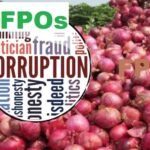The lack of rain in India poses a new threat to the world’s food supply.
According to Bloomberg, Rice could become the next global food supply concern as a lack of rain in regions of India, the world’s largest exporter, has led planting space to decrease to the smallest in about three years.
The threat to India’s rice production comes at a time when many countries are dealing with skyrocketing food prices and severe inflation. Due to a shortage of rainfall in some areas, particularly West Bengal and Uttar Pradesh, which account for a quarter of India’s output, the total rice planted area has decreased by 13% so far this season.
Also Read | PM Modi told the G7 that India’s Agri expertise could ensure food security.
Traders are concerned that a reduction in rice production may complicate India’s inflation war and lead to export restrictions. Such a change would have far-reaching consequences for the billions of people who rely on the staple. India accounts for 40% of the global rice trade, and the government has already reduced wheat and sugar exports to protect food security and keep local prices under control.
Rice prices in India
The rise in rice prices in India reflects anxiety over output. Prices of some types have risen by more than 10% in the last two weeks in major growing states such as West Bengal, Odisha, and Chhattisgarh due to insufficient rain and increased demand from Bangladesh, according to Mukesh Jain, a director of rice shipper Sponge Enterprises Pvt. According to him, export prices could reach $400 per tonne by September, up from as much as $365 today on a free-on-board basis.
Because Asia produces and consumes the majority of the world’s rice, it is critical to the region’s political and economic stability. In contrast to the spike in wheat and corn prices following Russia’s invasion of Ukraine, rice prices have remained stable due to adequate production and stockpiles, helping to avert a larger food crisis.
Much depends on the rice production in India and the progress of the monsoon. Part agricultural scientists believe there is still time to grow and make up for some of the loss. Rainfall is expected to be typical from August through September, which may boost agricultural yield.
Farmers are less optimistic. Due to a shortage of rain in June and July, Rajesh Kumar Singh, 54, a grower in Uttar Pradesh, said he planted rice on barely half of his seven acres (2.8 hectares) of land. ‘The position is really precarious,’ he admitted.
Risk to inflation
Rice prices are under pressure, according to Himanshu, a professor at Jawaharlal Nehru University who goes by one name. ‘There is rarely any sowing after mid-July, so the hope that it would return is unlikely,’ he said, adding that a decline in output poses a risk to inflation.
Rice could pose a new obstacle to India’s fight against inflation. This year, consumer prices have remained above the Reserve Bank of India’s tolerance ceiling of 6%, necessitating a steep rise in interest rates. The central bank may raise borrowing costs further this week as the rupee’s weakness outweighs the impact of lower commodity prices such as gasoline and vegetable oils.
According to Sonal Varma, an economist at Nomura Holdings Inc., if geographic inequalities in rainfall persist, it might have a negative influence on crop production, severely impacting economic growth and inflation.
Also Read | Worst global food security crisis in 50 years may already be here: CIMMYT.
India exports rice to over 100 countries, with Bangladesh, China, Nepal, and certain Middle Eastern countries among its top buyers. When it comes to food security, the world as a whole has some bright spots. The United States is on track to deliver a bountiful wheat crop in the coming weeks, while Ukraine has shipped its first grain shipment since Russia’s invasion.
Rice for ethanol production
With paddy yield in numerous states expected to fall, the government should reconsider its strategy of assigning rice for ethanol production, according to Siraj Hussain, a former secretary of India’s agriculture ministry.
As part of its attempts to reduce gasoline prices, India plans to increase ethanol manufacturing using surplus sugar and rice. Soaring food costs as a result of the Ukraine conflict have increased the risk of starvation and generated a ‘food vs fuel’ argument.
‘At this moment in time, estimating the exact extent of production loss is difficult,’ Hussain said. However, at current pricing, there is little justification for dedicating rice for ethanol production, he continued.


















Add Comment